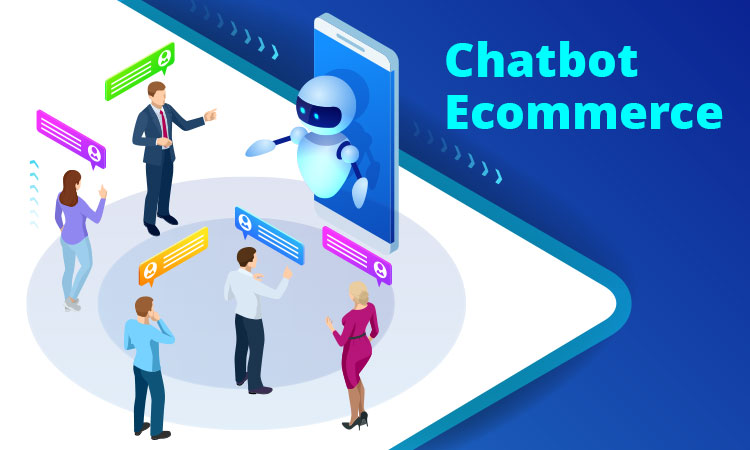Despite the numerous benefits of online shopping, ecommerce lacks one key aspect of traditional brick-and-mortar retail - personalized human service.
Employing legions of customer service agents to communicate with every buyer drains businesses resources. In the past decade, ecommerce merchants, web developers, and ecommerce platform providers have realized that chatbots could compensate for the lack of personal assistance in online shopping.
In this article, you will find out what an ecommerce chatbot is and how it can help you improve customer experience and increase online revenue.
What Is an Ecommerce Chatbot?
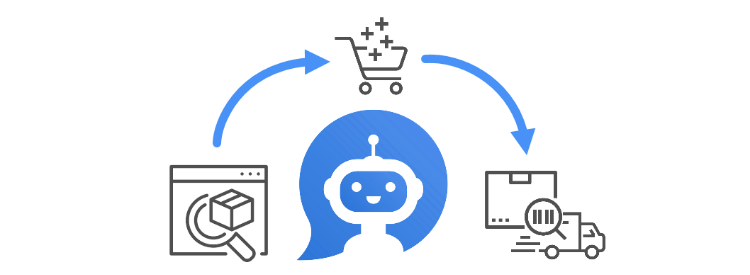
Ecommerce chatbots are virtual assistants that simulate contact with a person and respond to customer needs, enhancing customer experience and promoting engagement.
Typically, the customer informs the chatbot about their intent through queries. These queries can be in the form of a text message or buttons for recommended questions.
The queries ecommerce chatbots typically receive are related to:
- Order and shipping information
- Product searches
- Customer support contact information
After receiving a query, the chatbot delivers the requested information to the customer.
Not all chatbots require a query to activate. Chatbots can also track user activity through website cookies and use that information to send engaging messages. For example, if a customer visits a product page for a kitchen mixer, a chatbot could use that information to recommend an upgraded version of the product (an upsell), similar mixers, or other kitchen appliances and tools.
Types of Ecommerce Chatbots
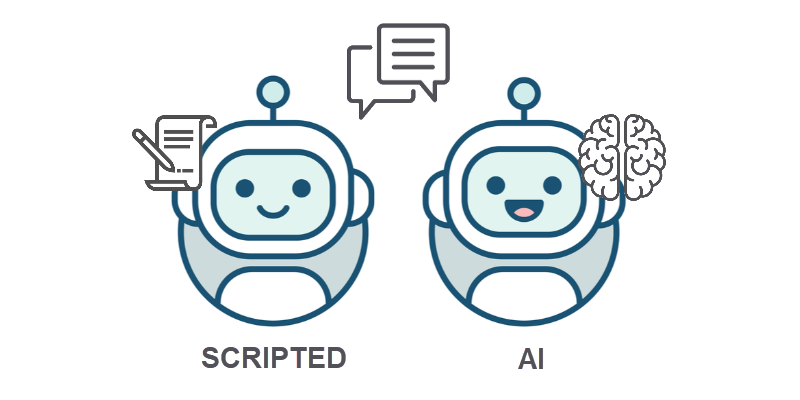
The two types of chatbots that are typically used in ecommerce are:
- Scripted chatbots. These have a predefined set of replies that are triggered by user queries containing a keyword or key phrase. When the bot encounters a message with no familiar keywords or phrases, it typically replies with an error message and query recommendations.
- Artificial intelligence chatbots. This kind of chatbot looks for the context behind the user’s query and ties it to an intent using machine learning and artificial intelligence. With every new interaction, the bot learns about the user and designs personalized future responses.
Regardless of the type, chatbots are typically designed as fictional human beings or brand mascots to appear human and minimize the feeling that the user is talking to a machine.
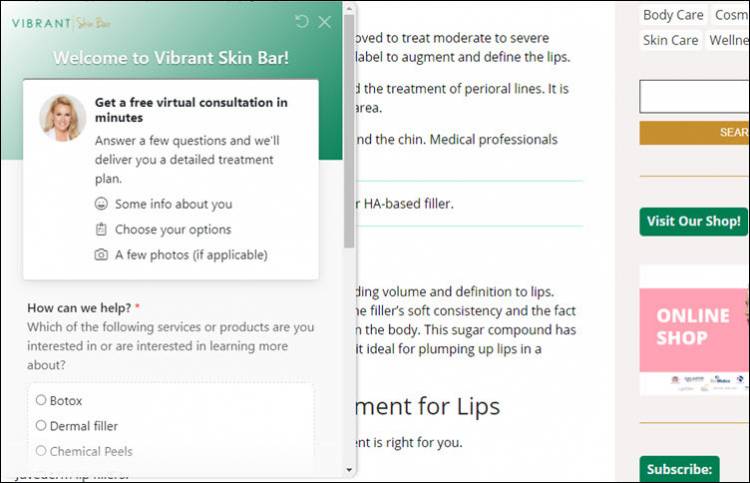
Note: Refer to our guide on how to add a chatbot to your website to customize customer shopping experience and automate their shopping flow.
Best Ecommerce Chatbot Use Cases
There are unlimited ways a brand can leverage chatbots to improve customer experience and drive sales.
The best use case for an ecommerce chatbot depends on the brand’s business model, but the following are the most common. These use cases are interconnected and often appear simultaneously.
Finding Products
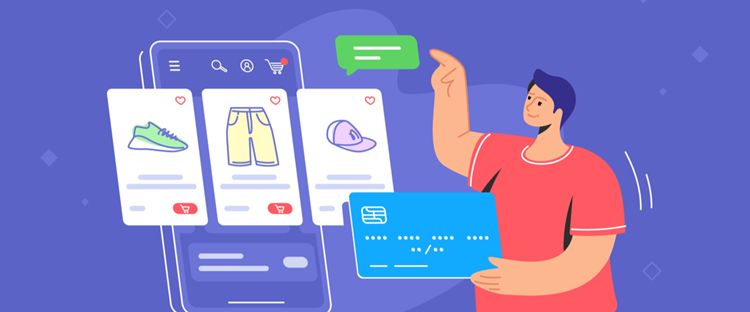
When in a rush, customers don’t have time to perform a traditional product search which involves typing keywords in a search bar and filtering the search results. Chatbots can be used to speed up and simplify the product searching process.
A product search involving an ecommerce chatbot typically consists of the following steps:
- The chatbot asks about product criteria.
- The customer replies to the questions.
- The chatbot uses the answers to filter the products and replies with links to the pages of the products that meet the customer’s criteria.
This practice is especially effective for new customers, who are not yet familiar with a brand’s product range.
Creating Engaging Shopping Experiences

Chatbots are an opportunity to create an engaging and pleasant experience for customers. One way to engage customers is by designing quizzes that allow customers to receive personalized product offers based on their answers.
The questions in the quiz can be related to the brand’s product range or completely random. This approach is particularly suited to younger audiences, who react positively to Buzzfeed-like quizzes.
Engaging shopping experiences are often inspired by pop culture. Domino’s and Whole Foods integrated AI chatbots with Facebook Messenger. In a special twist, both brands allowed customers to make queries using emojis.
Sending a pizza emoji to Dom, the chatbot initiates a pizza order. For every food emoji sent, the Whole Foods chatbot returns recommendations for recipes with the food depicted.

Performing Market Research and Collecting Feedback
Having customers complete quizzes and surveys using a chatbot is an opportunity to gather data that can be used to create buyer personas.
The data can easily be structured by making the chatbot ask separate questions for every data type. Having the chatbot collect structured data eliminates the need to enter the same data manually into a database, saving time, staff, and funds.
Customers also use chatbots to rate their satisfaction with the shopping experience and the chatbot's functionality.
Providing Information
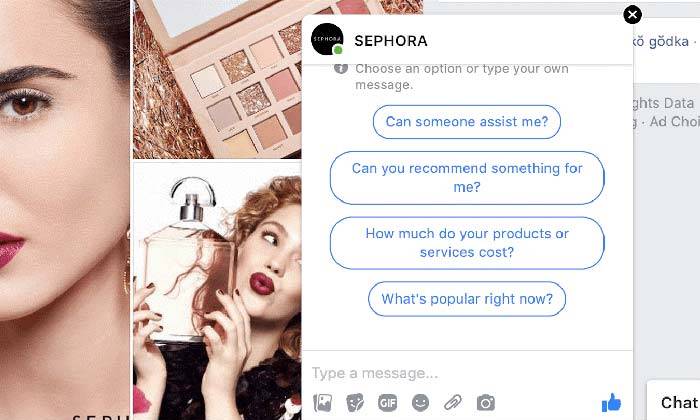
Navigating through an ecommerce shop can be challenging for customers if they are faced with a confusing shop UX or are new to online shopping in general. Chatbots provide customers with a simple method to find:
- Customer support contact information
- Addresses and contact information for brick-and-mortar stores
- Details about shipping time and costs
- Return policy details
When used for this purpose, the chatbot typically pops up as soon as the website loads and contains buttons that provide the information the customer is looking for.
Providing Post-Sales Support
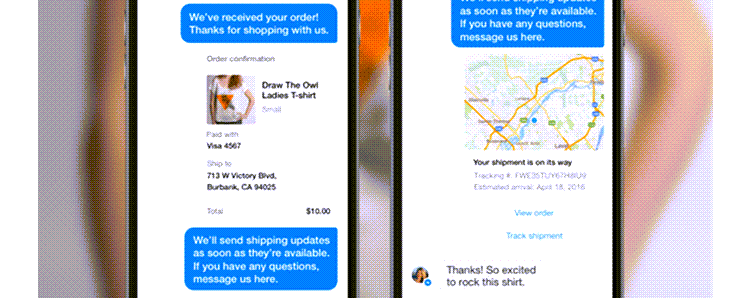
After-sales support services, such as refunds, returns, and repairs, take time to process manually. Fortunately, these services have defined procedures and can be automated using a chatbot.
The process consists of the following steps:
- The customer informs the chatbot that they are unhappy with a product they purchased.
- The chatbot scans through the customer’s order history looking for products that can be returned or are under warranty.
- The chatbot asks the customer which product they are referring to.
- The customer selects the product.
- The chatbot asks for information needed to complete the customer’s request and provides information on how to ship the product.
When prompted, the chatbot can also inform the customer about the progress and outcome of their request.
Note: Refer to our article about ecommerce personalization to learn how to employ advanced strategies to boost your sales.
Chatbots in Ecommerce: Advantages and Disadvantages
Like any technology, chatbots have features that make them worth using, and flaws that can cause operational issues. Below you will find the most important advantages and disadvantages of chatbots that will help you assess whether to use them in your business.
Advantages
These are the established benefits an ecommerce chatbot provides:
- Reduction in staff needed.
- Automatization of after-sales support services.
- Personalization of the customer shopping experience.
- Savings in time and funds.
- 24/7/365 availability.
- Possibility of serving multiple customers at once.
- Easier data collection.
Disadvantages
If considering a chatbot for your business, keep in mind that they have certain drawbacks:
- Prone to misunderstanding user intent.
- Issues with jargon unless taught (AI chatbots) or designed by someone who keeps up with pop culture trends (scripted chatbots).
- Susceptible to security breaches if poorly integrated.
- Raise customers’ expectations regarding response times and quality of service.
Conclusion
Chatbots have great potential to boost sales and customer satisfaction when they are well-designed and used the right way.
Use the information provided in this guide to determine whether your business would benefit from an ecommerce chatbot.
